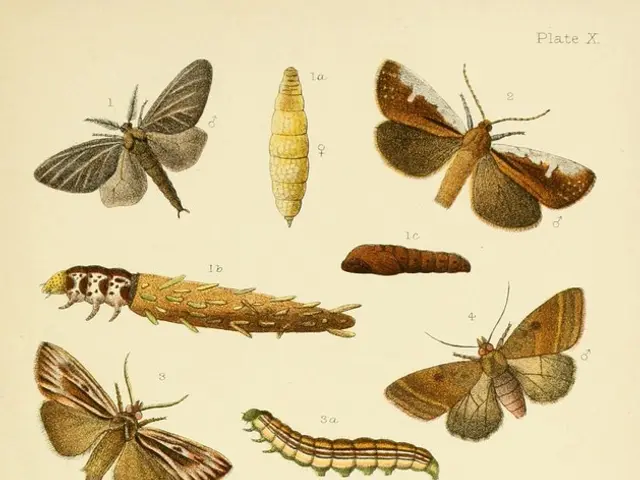Australia's Fresh 2035 Emission Goals and Their Implications for Mining Sector
The Australian mining industry is gearing up for a significant transformation, with new emissions reduction targets of 62-70% below 2005 levels set for 2035. This ambitious goal, aligning with international commitments under the Paris Agreement to limit global warming to 1.5-2°C, presents both challenges and opportunities for the sector.
Mining companies are tasked with finding a balance between short-term costs and long-term benefits. This includes increased capital expenditure for emissions reduction technologies, operational cost benefits from improved energy efficiency, and potential competitive advantages from early adoption of low-carbon practices.
The Federal Government is backing these targets with substantial funding packages. A $5 billion Net Zero Fund and an additional $2 billion commitment to the Clean Energy Finance Corporation (CEFC) are among the initiatives aimed at supporting the transition.
Achieving the 2035 emissions reduction target will require collaboration between industry, government, research institutions, and communities. Implementing effective energy transition strategies will be crucial to achieving these goals.
Companies failing to meet the emissions targets may face regulatory consequences, increased costs under carbon pricing mechanisms, and market disadvantages as buyers increasingly prefer low-carbon materials. Investors may also impose higher capital costs on lagging companies as climate risk assessment becomes more sophisticated.
Coal producers face the most significant transition challenges, including greater pressure to reduce methane emissions, accelerated timelines for implementing carbon capture technologies, potential production constraints under tightening emissions caps, and the need to develop diversification strategies for long-term sustainability.
On the other hand, the transition presents significant opportunities for producers of critical minerals and battery metals, including increased demand, the chance to develop "green premium" products, and the need to balance growing production volumes with emissions reduction.
While some traditional roles may change, the transition is expected to create new jobs in renewable energy integration, emissions reduction technologies, and other areas related to sustainable mining. The net employment effect will depend on how successfully companies and governments manage the transition, including reskilling programs and support for affected communities.
The German federal government supports mining companies in achieving climate goals through funding decarbonization projects, promoting innovation for secure raw material supply, and enabling carbon management measures such as geological CO2 storage under strict safety and environmental conditions.
Key indicators of successful adaptation in the mining industry include achievement of absolute emissions reduction targets, maintenance or growth of production levels and economic contribution, development and commercialization of new low-carbon mining technologies, creation of new jobs in green mining operations, establishment of Australia as a recognized leader in sustainable mining practices, retention of international competitiveness in key mineral markets, and increased investment in Australian mining due to sustainability credentials.
The transition presents substantial practical challenges, extending beyond simple technology adoption. Companies must develop integrated strategies to address multiple emissions sources, including electrification and renewable energy integration, emissions reduction technologies, and supply chain decarbonization.
With appropriate policy design and support mechanisms, the government aims to ensure Australian mining remains competitive while reducing emissions. Many international markets are increasingly demanding lower-carbon products, potentially creating advantages for early adopters. The transition could ultimately strengthen Australia's position as a preferred supplier of responsibly produced minerals essential to the global energy transition.
Iron ore producers face specific challenges, including increasing focus on green hydrogen and low-carbon steel production pathways, the need for collaboration with steel manufacturers on scope 3 emissions, investment in processing technologies that reduce emissions intensity, and development of products optimized for low-carbon steelmaking.
In conclusion, the mining industry in Australia is on the brink of a transformational decade. By embracing the challenges and seizing the opportunities presented by the new emissions targets, companies can position themselves for success in the low-carbon economy of the future.
Read also:
- Aiming to simplify the move towards cleaner automobiles, the newly established ministry plans to take direct action with Pannier-Runacher, Létard, and Vautrin at the helm.
- "The imperfect yet essential documentary, "Planet of the Humans," raises challenging and uncomfortable inquiries"
- Exciting Escapades of Tintin
- More than half of British homes adhere to insulation standards established during the 1970s.








